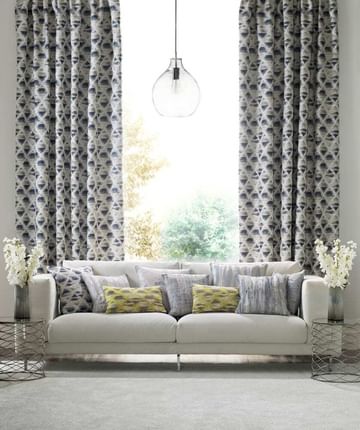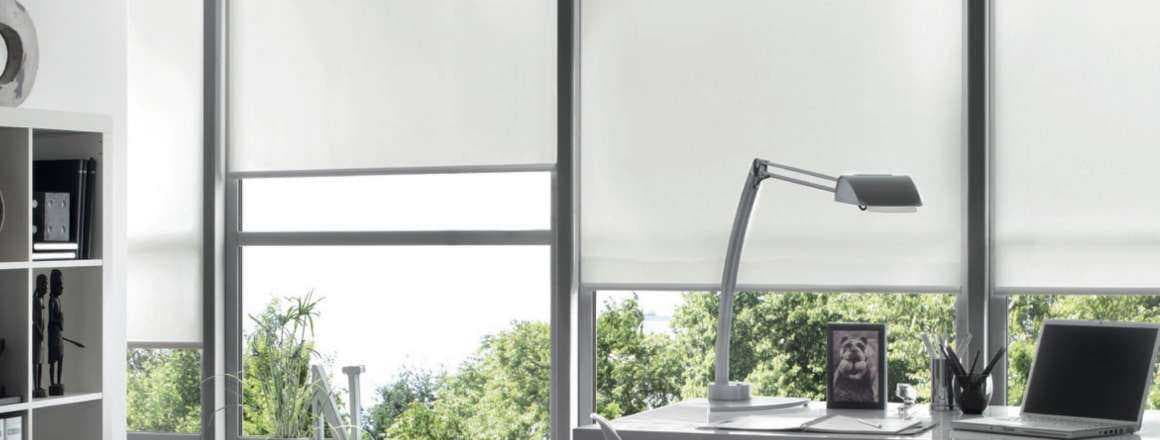September 30th 2018
Are blinds or curtains best at retaining heat in the home?
Reynolds Blinds answer are blinds or curtains best at retaining heat in the home? It can be hard to know whats best, do you look for economical or decorative? Let Reynolds Blind help you make the right decision.

There’s no denying it, summer is behind us now and glorious autumn is beckoning the colder nights – but if that chill is extending into your house it is worth checking your blinds and curtains.
Around 10 per cent of the heat in our homes is lost through the window with that figure rising if you have single panes.
It may not sound like that much but when you add up losses through doors, floors, walls and the roof every bit counts. By tackling each source of loss you can help to heat your home more efficiently making your energy use cheaper and more environmentally friendly.
Cut heat loss with blinds and curtains
Choosing the right curtains and blinds can help to stem heat loss by helping to shut out draughts and trap them in the warmth.
The size of the windows in your home and the space they take up on the wall will also make a difference when it comes to heat loss so begin by considering what your biggest problem might be in terms of winter draughts.
The question then is which is best for preserving heat, curtains or blinds? Both can be effective but the secret is to get as close a fit as possible and eliminate gaps that allow draughts in and the heat to escape.
A particular pitfall to avoid is curtains that fall over a radiator sending the warmth up to the window – and out through the gaps in the seal.
Coverage is key
A curtain possibly has the edge only in that it is capable of covering a larger area and the attention to detail will not be as demanding as finding efficiency in blinds. To achieve maximum performance blinds need to cover that area as closely as possible to trap the heat in as they usually sit within the window.
Curtains on the other hand hang across the entire area and while they do not achieve a seal, floor-length curtains that stretch to the very top of the rail will provide an effective block to escaping heat.
Of utmost importance when adding curtains to cut heat loss is to include a good quality lining to provide a far thicker barrier to the cold – and the escaping heat.
Add a lining
Likewise, blinds will benefit greatly in their capacity at retaining heat if they also have a decent lining – this needs to be complemented with a good fit.
Roman blinds work well to shut out cold and trap in heat as a result of their full window coverage and material choice, although achieving a snug finish can be tricky.
Good quality, lined curtains and blinds can make a real difference in keeping your home warm over the colder autumn and winter months.
For advice on what window covering will give you the best protection get in touch with Reynolds Blinds today.
While many may have questions on which one is best when it comes to keeping warm in the living room and avoid heat loss, we thought it’s best to talk about qualities curtains or blinds have when it comes to retaining heat in your living room. The following are the qualities each have:

How Blinds retain Heat in a living room?
Blinds are a form of practical and decorative window treatment that is primarily used to block sunlight and maintain privacy in a living room and all rooms in the home. Some people, however, argue that blinds should be used to save energy because they can insulate your home from heat and cold.
If you live in a cold climate and your heating costs are excessive, consider using blinds to help keep some of the heat in your home. Here we will discuss how the blinds can not only be the best way to style and add some flavour to the way your home and windows can look but also how blinds can help insulate your windows and keep the cold out.
How do blinds keep the cold out?
Blinds insulate your home by trapping a layer of air between the fabric and the window when correctly measured and installed. This effectively seals the windows, preventing air from escaping through them. Pull up the blinds during the day for the best effect, allowing sunlight to warm the house. The blinds can be drawn down in the evening as soon as the sunsets. Warm air from natural sunlight and your mechanical heaters will not leave the house if the blinds are closed.
Best types of blinds that help keep rooms warm
Curtains and Blinds come in a variety of styles. Fabric slats are used in others, while wooden, plastic, and metallic slats are used in others. Fabric blinds are the most effective at keeping the cold out. Venetian blinds with slats, for example, are better for the summer because they allow heat to escape between the slats.
Honeycomb blinds are a form of fabric roller blind that works well as both an insulator and a sun blocker. When selecting blinds, consider the fabric, as some are more insulating than others. The easiest way to hold the heat in is to wear thermal fabrics.
Now let us shift our focus and appreciate how curtains also help with heat loss in our homes.
How much do curtains help when it comes to heat loss?
If you want to save money on your energy bills, you should pay special attention to your windows. A considerable amount of heat is lost through a home's windows, but curtains are a simple way to reduce this loss.
And the Sunlight?
Of course, if we’re worried about energy conservations, we shouldn’t just be concerned about heat leaving the room; we should also be concerned about sunlight entering the room.
Natural heat from daylight entering your home will help you save money on your energy bills. This is especially important if the window is facing south, so there will be more direct sunlight.
Where do curtains come in?
By restricting the flow of air between the warm and cold areas of a space, curtains aid in heat retention. Also, double-glazed windows will allow heat to escape, but heavy curtains will act as a barrier, preventing air from flowing from the main room to the window.
While some air particles will be able to pass through gaps in a curtain, many will face resistance, similar to wind blowing against a ship's sail.
Even if the air directly beside the window cools significantly if it isn't allowed to mix with the warm air in the rest of the room, you won't notice – and your energy bills won't either.
Which type of curtains is most effective?
According to University of Salford researchers, drawing the curtains at dusk will minimize heat loss by 15-17 per cent. The number for blinds is a little lower, at 13-14 per cent, but the gap is significant enough to justify closing them. These results have been confirmed in laboratories all over the world, with the US Department of Energy estimating a 10% reduction. If you choose to use electrical tape to secure your curtains to the wall on both sides, this will increase to 25%. Although this may seem to be a drastic measure, it should be considered in places where the back of the curtains is unlikely to be seen.
How much heat can curtains help retain?
Heavier curtains, by extension, prevent heat transfer between the cold air around the window and the warm air in the rest of the room. In general, the thicker the curtains are, the more powerful they are as an insulator. The best insulating curtains have a lining added to the back that increases insulation while not limiting airflow and noise transfer. Consider hanging a second pair of curtains behind the first pair, which are specifically designed for this purpose.
Conclusion: Curtains or Blinds?
Having looked at both curtains and blinds and how they can help with the insulation of energy in the home or rooms, they are both good. From here it is just a matter of preference, choosing whether to have blinds or curtains in your home and work on how best they can give you the warmth they can.
However, upgrades to new insulating windows will greatly increase the warmth and energy efficiency of your home if you happen to have old or drafty windows. And on the other hand, if you lose a lot of heat through your windows, blinds can be a great way to save money on electricity. To ensure that no heat escapes from the sides or top, have your blinds measured and installed by a professional such as Reynolds Blinds, get in touch today or book a home visit. You can also visit our showrooms in Oxford, Birmingham, Sutton Coldfield, Banbury, Newbury and Worcester
We have an even bigger selection in out showrooms.
Speak to our experts about bringing your ideas to life
